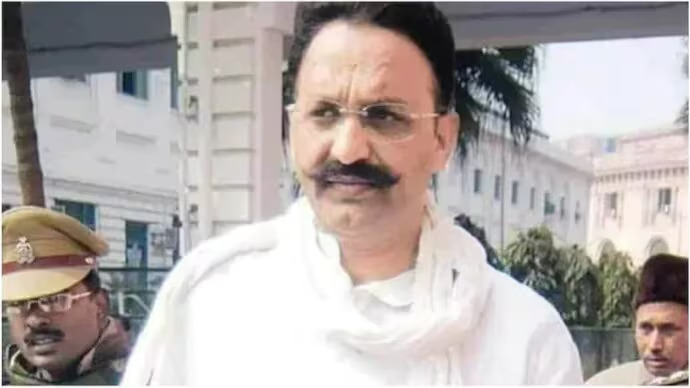Table of Contents
On this Shaheed Diwas, we remember the supreme sacrifice of three of India’s most iconic revolutionary heroes – Bhagat Singh, Shivaram Rajguru and Sukhdev Thapar. Their executions on March 23, 1931 by British authorities shook the very foundations of colonial rule and inspired countless more to join the freedom struggle.
Bhagat Singh was just 23 years old when he was sent to the gallows, but his fearless defiance and burning desire for an independent India made him a towering figure. Along with his comrades Rajguru and Sukhdev, he electrified the nation with his daring acts of resistance against the British Raj. Their dramatic act of throwing bombs in the Central Legislative Assembly in 1929 aimed to show the colonial regime could no longer subjugate Indians through violence and fear.
Jallianwala Bagh Massacre (1919)
On the Baisakhi festival day, a large crowd of Indians had gathered at the Jallianwala Bagh gardens in Amritsar, Punjab to protest against the repressive Rowlatt Acts imposed by the British. Despite the gathering being peaceful and including women and children, the acting British Brigadier-General Reginald Dyer ordered his troops to open fire on the unarmed crowd. Dyer’s soldiers began indiscriminately firing on the trapped crowd from the only exit point.
Official sources at the time reported 379 deaths, but the Indian National Congress estimated over 1,000 casualties occurred. Defenceless men, women and children trying to flee were gunned down in cold blood. The sheer brutality and lack of remorse by the British authorities outraged Indians nationwide. The massacre turned many previously moderate figures towards armed resistance against colonial oppression. Young Bhagat Singh, who witnessed the atrocities firsthand as a 12-year-old, was among the countless youths radicalized by the event to join India’s freedom struggle through revolutionary means.
Joining the Hindustan Republican Association (1924)
As a young man, Bhagat Singh was deeply affected by the Jallianwala Bagh Massacre of 1919, where British troops opened fire on peaceful protesters. This brutality sparked his anger towards the colonial regime. In 1924, he joined the Indian revolutionary youth organization Hindustan Republican Association (later Hindustan Socialist Republican Association). At age 16, Singh was influenced by the revolutionary nationalist group HRA’s aim to overthrow British rule through armed struggle. He formally joined their ranks, taking the first steps on his path to militancy.
Kakori Train Robbery (1925)
The Kakori Train Robbery was a famous case of revolutionary violence against British rule carried out on August 9, 1925 near Kakori, a village near Lucknow. A group of Bengali youth affiliated with the Hindustan Republican Association (HRA) led by Ram Prasad Bismil looted the cash reserves of a train carrying money belonging to the provincial government.
Their intention was to use the looted funds to purchase arms and ammunition for waging armed rebellion against colonial authorities. Though the dacoity itself was successful, the robbers were eventually identified, arrested and prosecuted after an extensive manhunt by British police. While not directly involved, the Kakori case and its resulting court trials brought great publicity to HRA’s revolutionary activities and anti-imperialist cause among Indian masses.
Saunders’ Killing In 1928
Lala Lajpat Rai led a peaceful protest against the Simon Commission which was confronted with brutal lathi charge by police, leading to Rai’s eventual death. To avenge this, Bhagat Singh, Rajguru and others plotted to kill the police superintendent responsible. However, they mistakenly killed John P. Saunders, a senior British police officer. This marked the beginning of their open revolution against colonial rule.
The Assembly Bomb Case
Bhagat Singh and his revolutionaries set off bombs inside the Central Legislative Assembly in Delhi to protest against the draconian Public Safety Bill and British oppression. The bombs were deliberately planted at a time and place to avoid casualties. Thrown with pamphlets proclaiming “It takes a loud voice to make the deaf hear”, this dramatic incident forced the British authorities to take notice of the growing revolutionary movement.
Their key motivation behind the dramatic Assembly bombing in 1929 was to strike fear into British rulers and prove armed revolutionaries could shatter their claims of maintaining control through violence. By setting off non-lethal explosives with pamphlets proclaiming “It takes a loud voice to make the deaf hear”, they aimed to forcefully register their protest against repressive laws like the Public Safety Bill while avoiding civilian casualties. The calculated act made the empire’s Legislative Assembly itself the site of their defiance.
While incarcerated after the Assembly bombing, Bhagat Singh went on hunger strike multiple times to protest against the inhuman treatment of Indian political prisoners by the British authorities. He demanded equal rights, better food and an end to insults to their patriotism. Joined by other revolutionaries like Jatindra Nath Das, who died after a 63-day fast, their hunger strikes garnered national attention and admiration for their willingness to sacrifice all for their cause.
Trial and Execution
The highly-publicized trial began in May 1930, with Singh and his comrades charged with conspiracy to wage war against the British crown through revolutionary violence like the Assembly bombing incident. During the proceedings, Singh and his co-accused made fiery courtroom speeches eloquently justifying their radical path as the only way to overcome British oppression and achieve Indian independence. Singh’s celebrated statement – “The revolution is an inalienable right of mankind” became a rallying cry.
Despite fierce legal defense, Singh, Rajguru and Sukhdev were convicted and sentenced to death by hanging in October 1930. All petitions and appeals for commutation were rejected by the British. On March 23, 1931, the three young revolutionaries – Singh (23), Rajguru (22) and Sukhdev (24) – were executed together at Lahore jail. Their defiant spirit was evident till the end, with Singh’s final words being “Inquilab Zindabad!” (Long live the revolution!)
News of their martyrdom sent shockwaves across India, sparking hartals, demonstrations and outrage against the British. Their executions helped swell the ranks of Gandhi’s non-cooperation movement and the independence struggle. The sacrifice of these young, educated revolutionaries transformed them into beloved national icons whose idealism and willingness to sacrifice all for Indian freedom inspired countless more to join the cause.
Remembering Savitribai Phule on Her Death Anniversary: First Female Teacher of India











One thought on “Shaheed Diwas: Remembering India’s Iconic Revolutionary Martyrs”